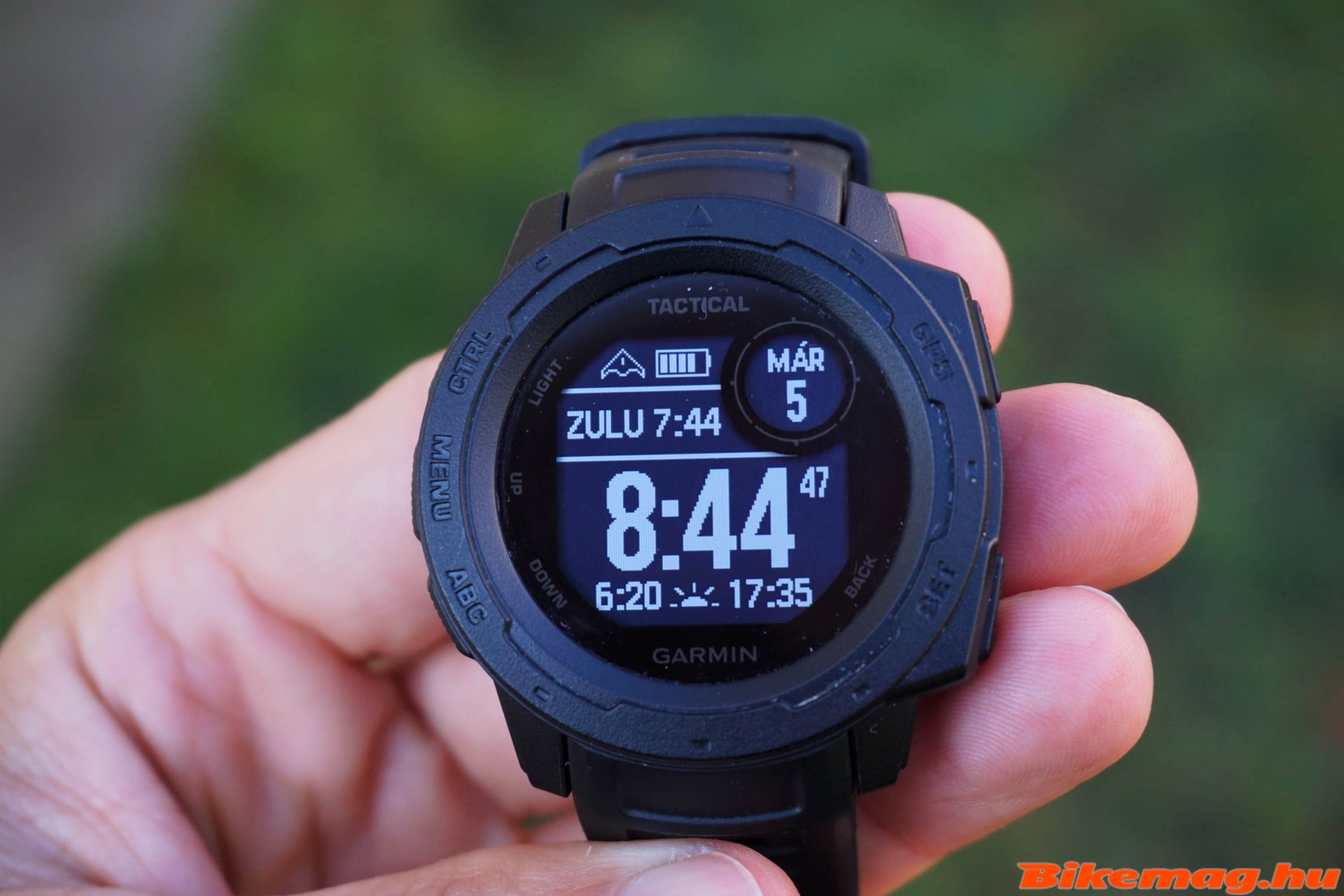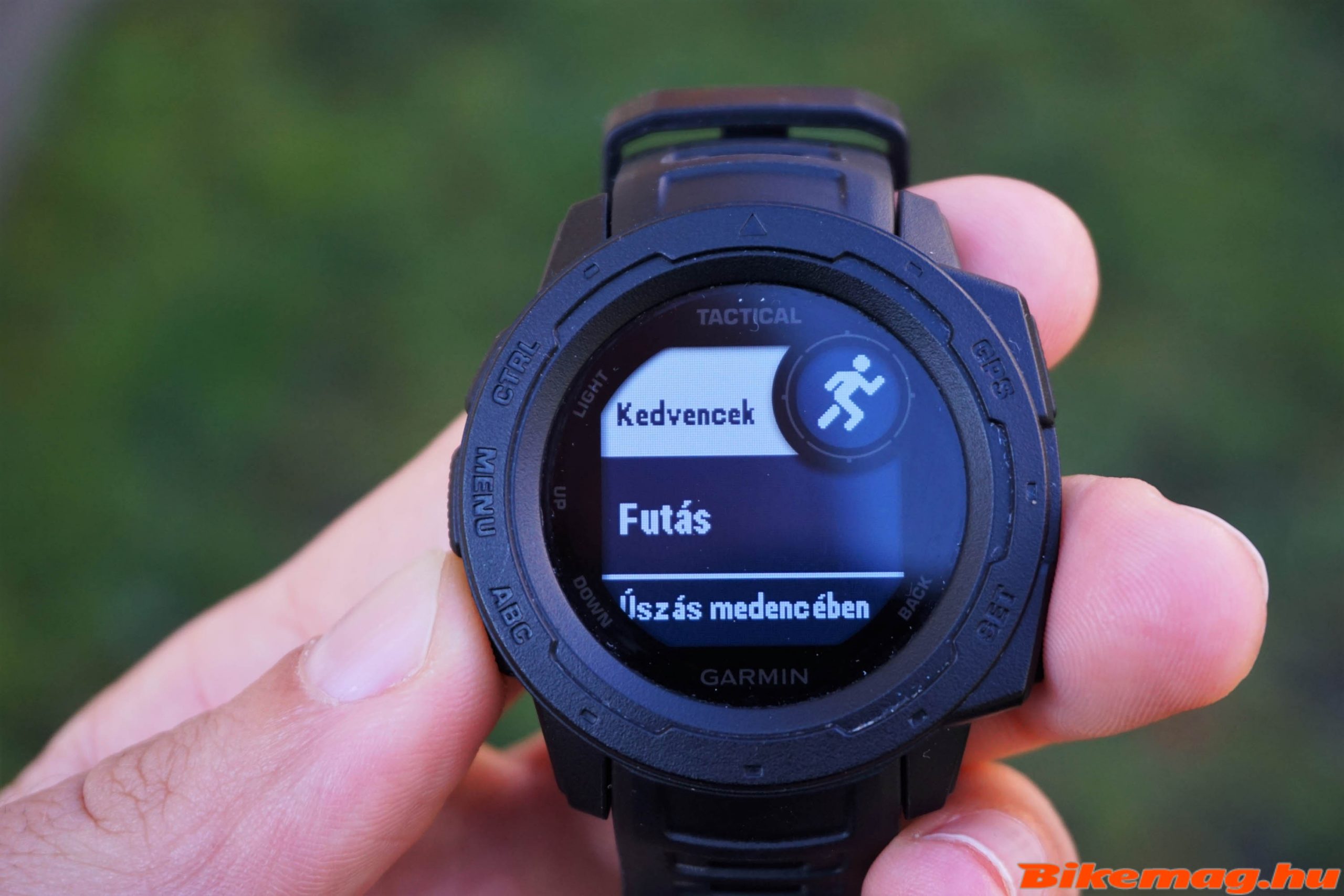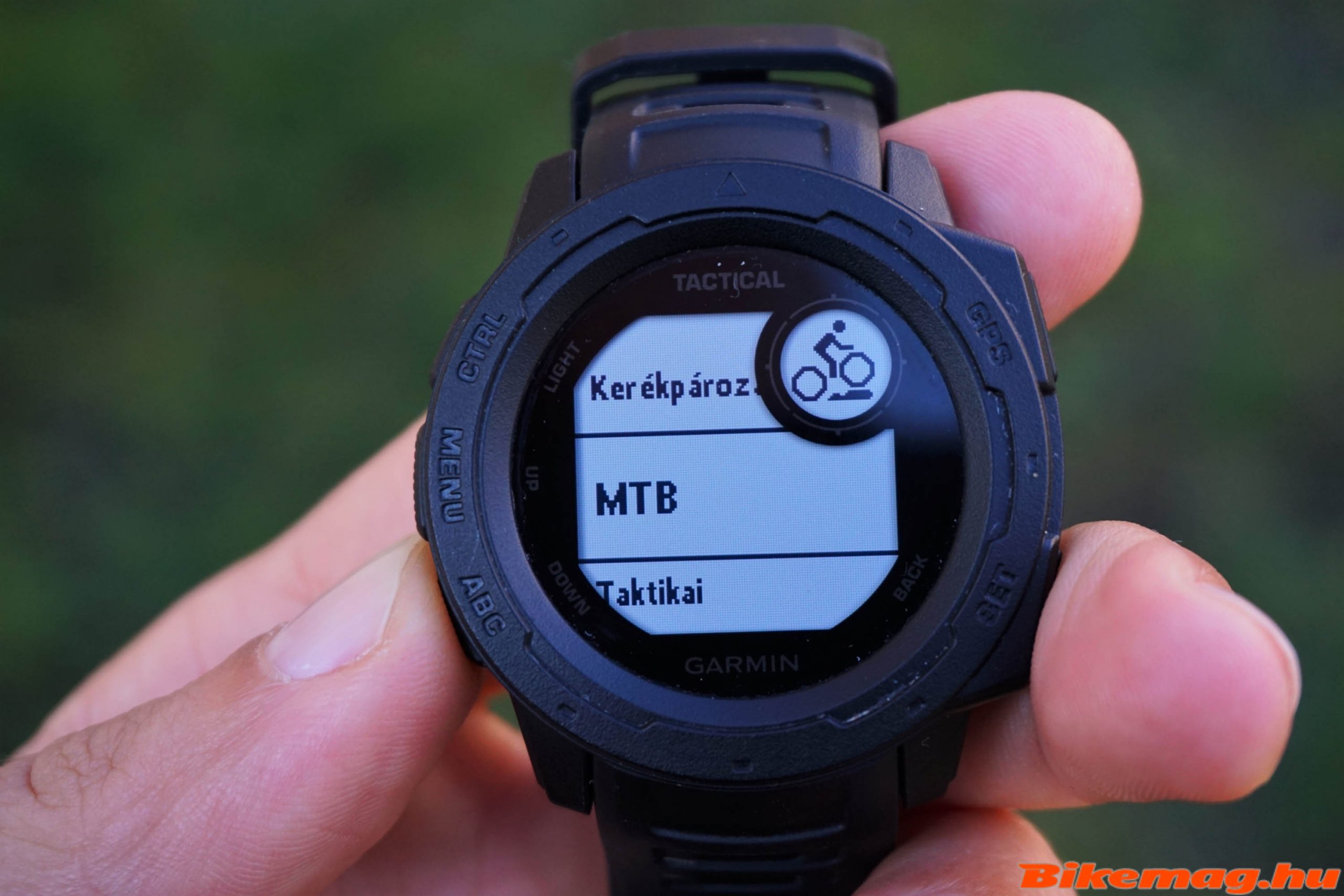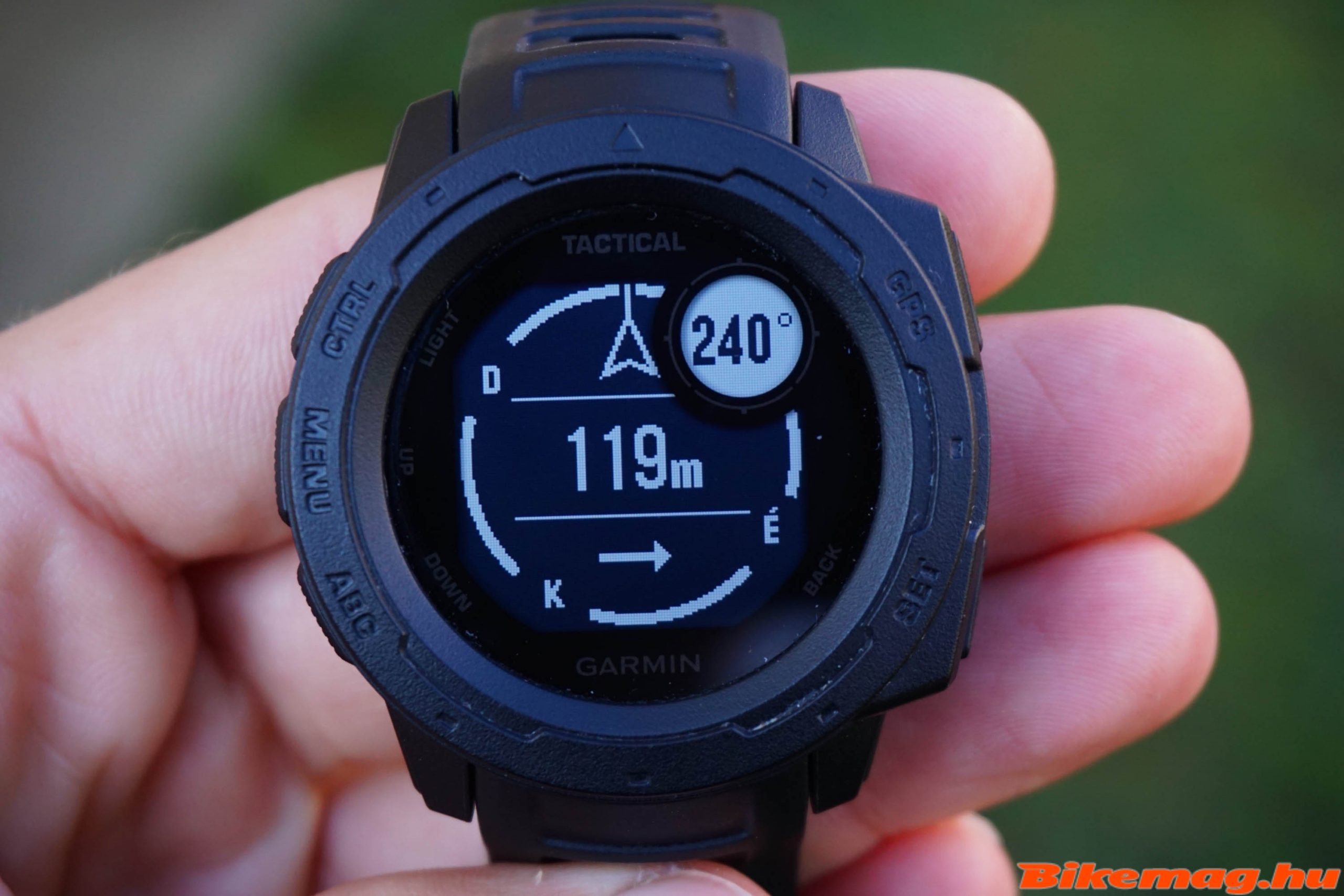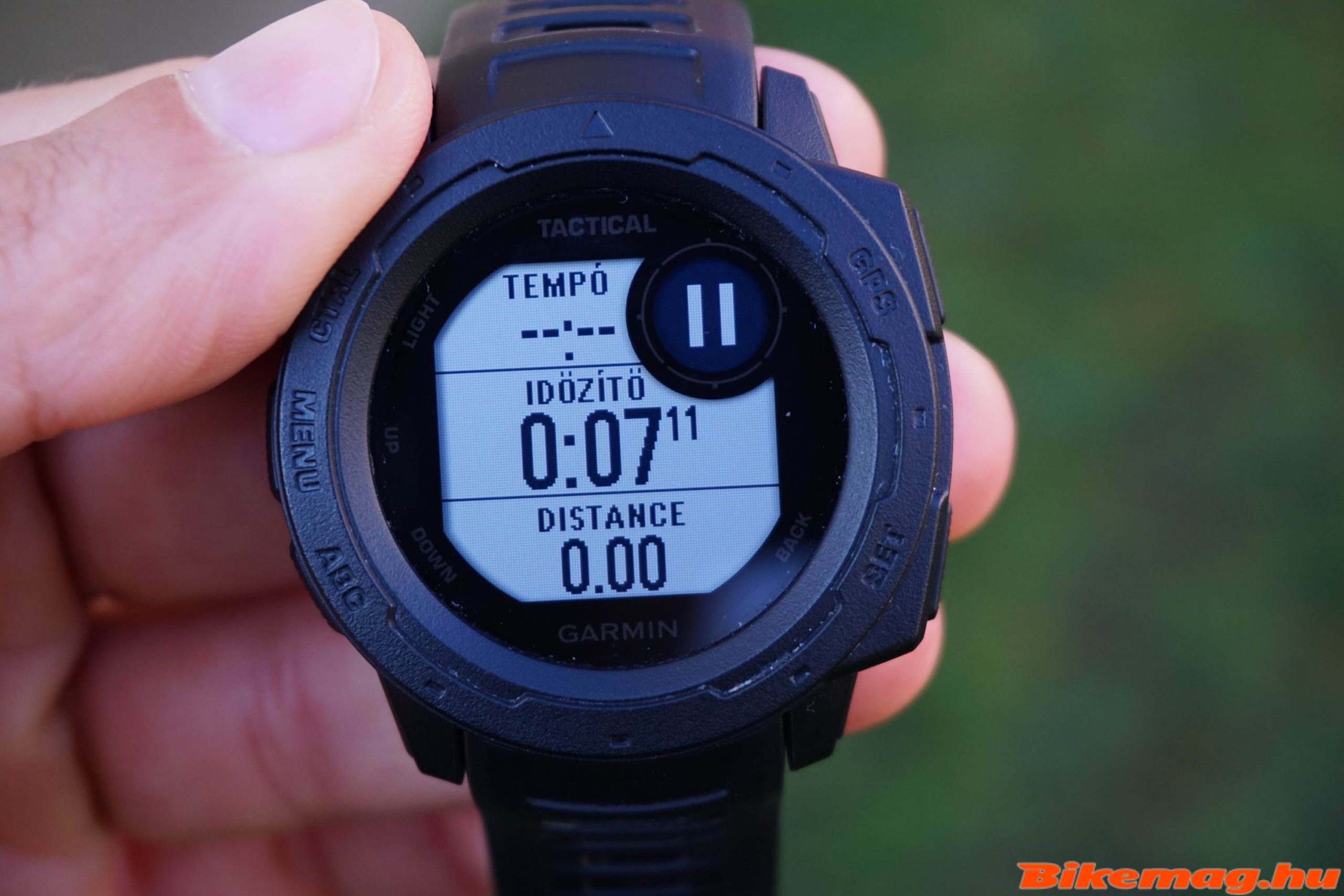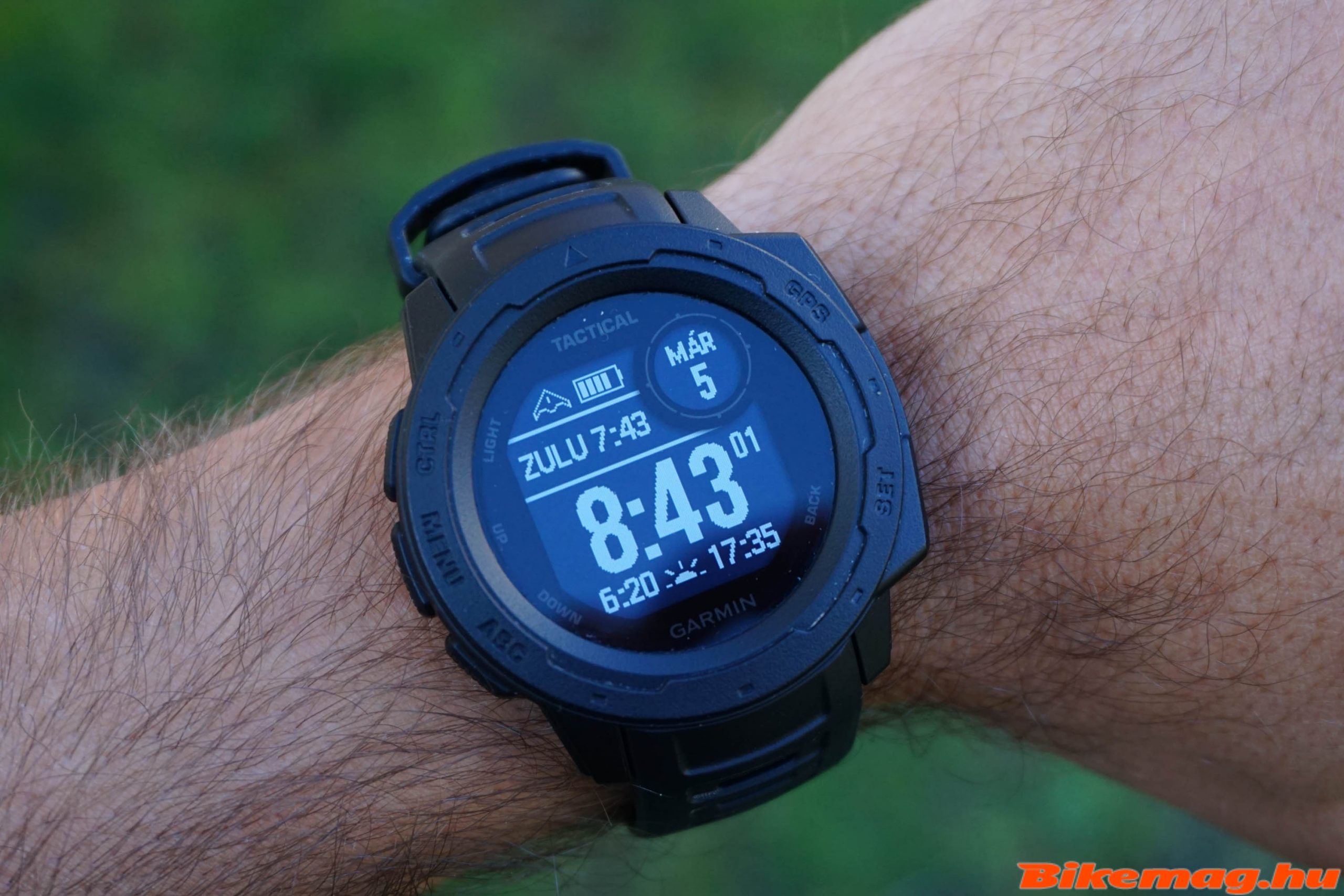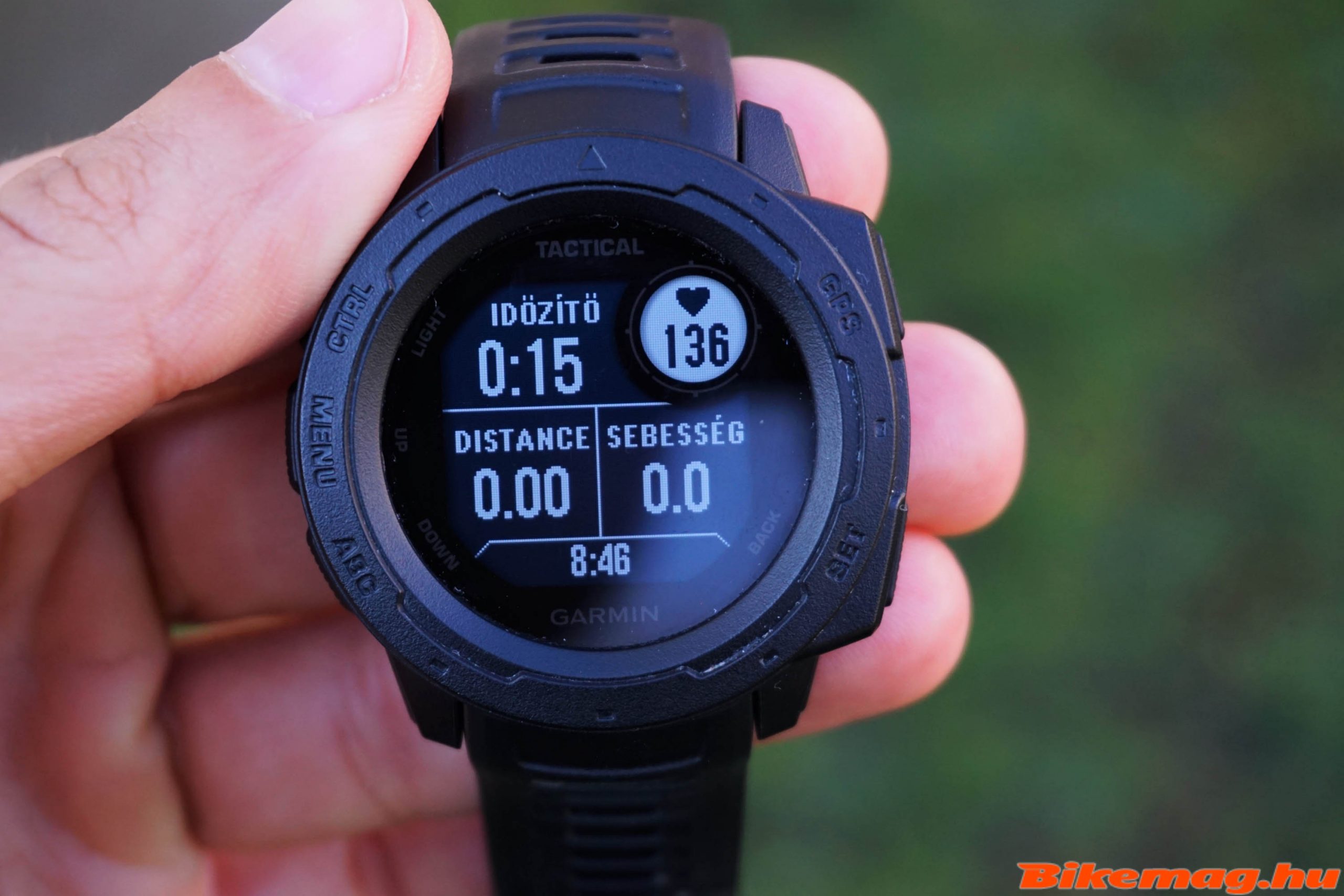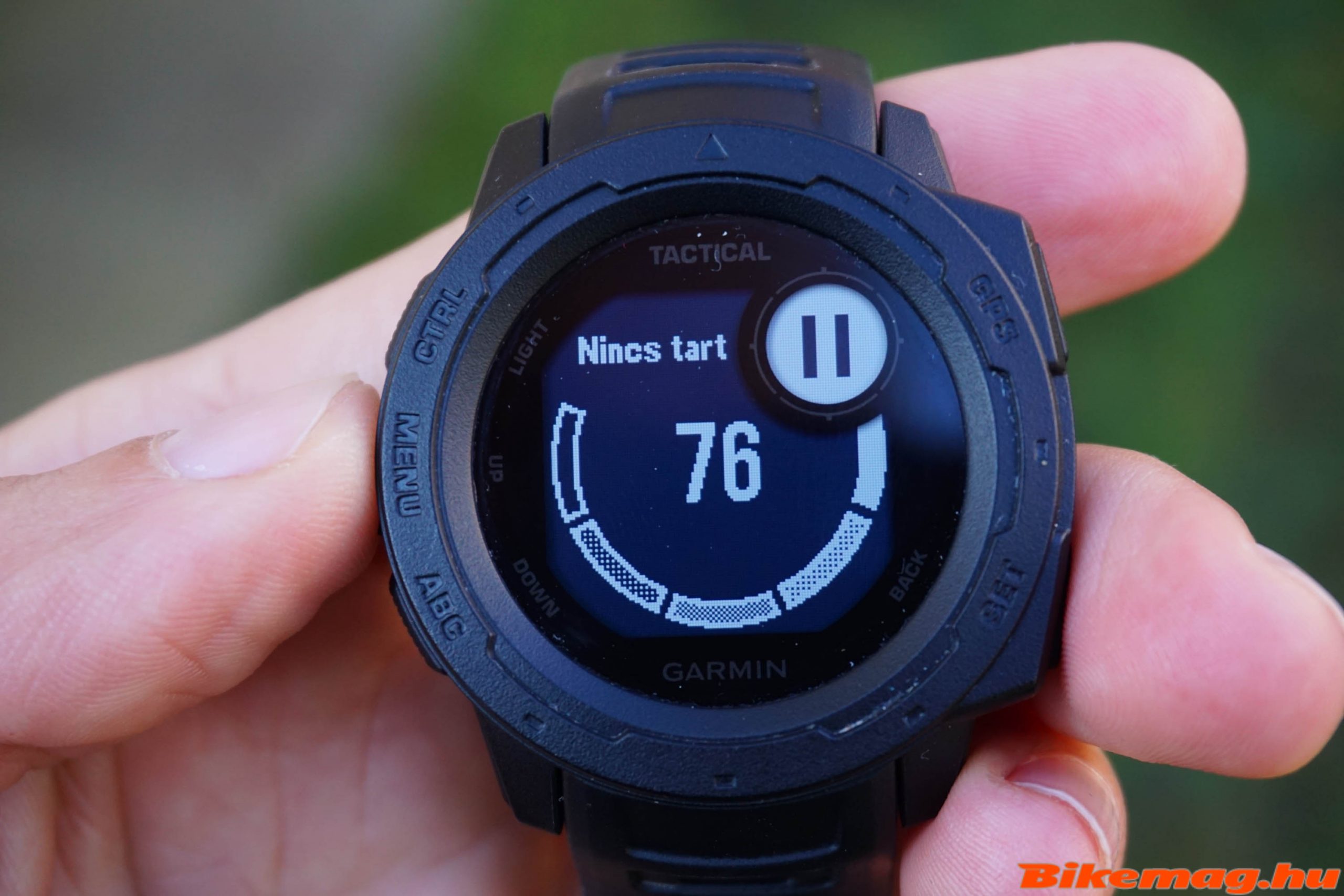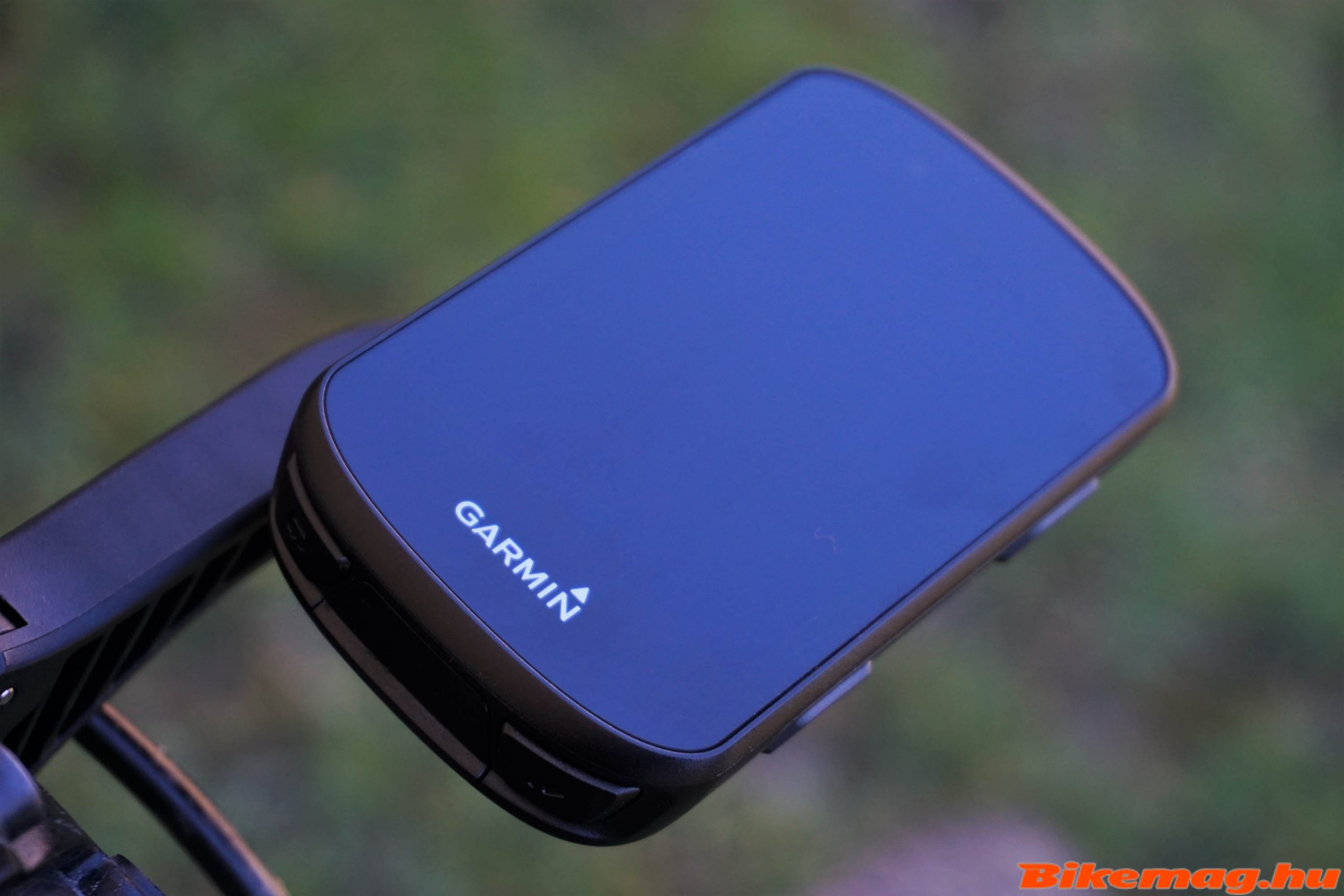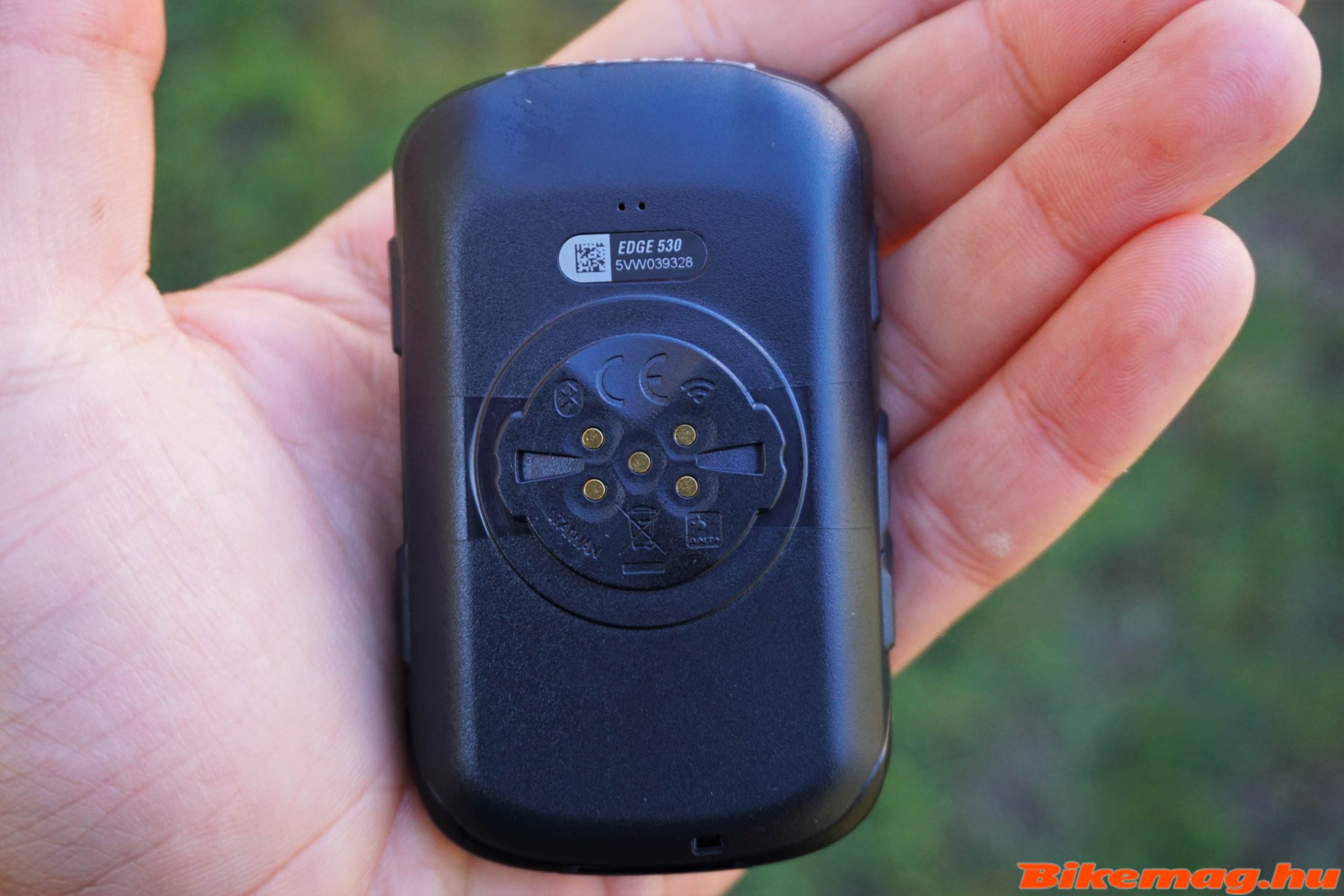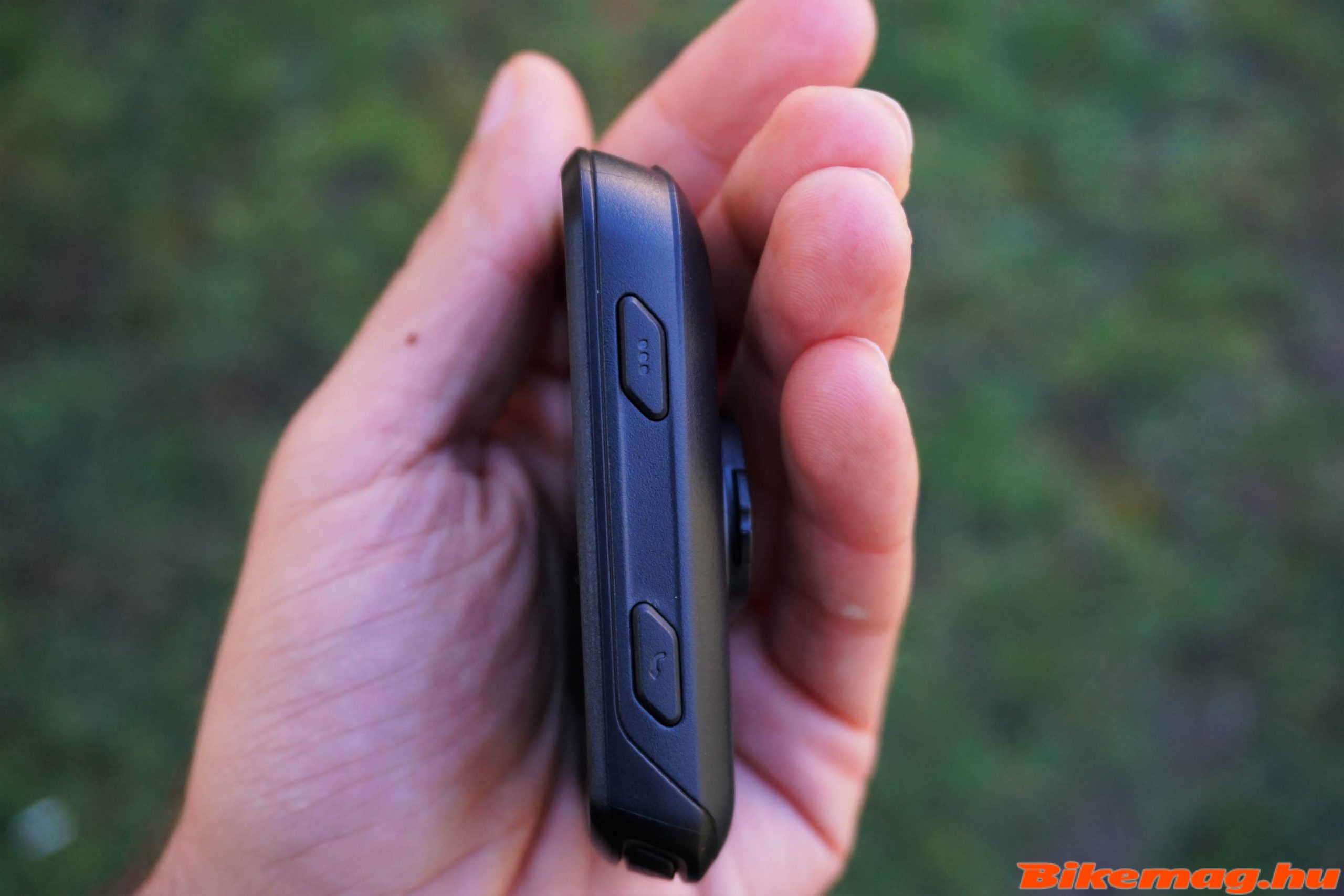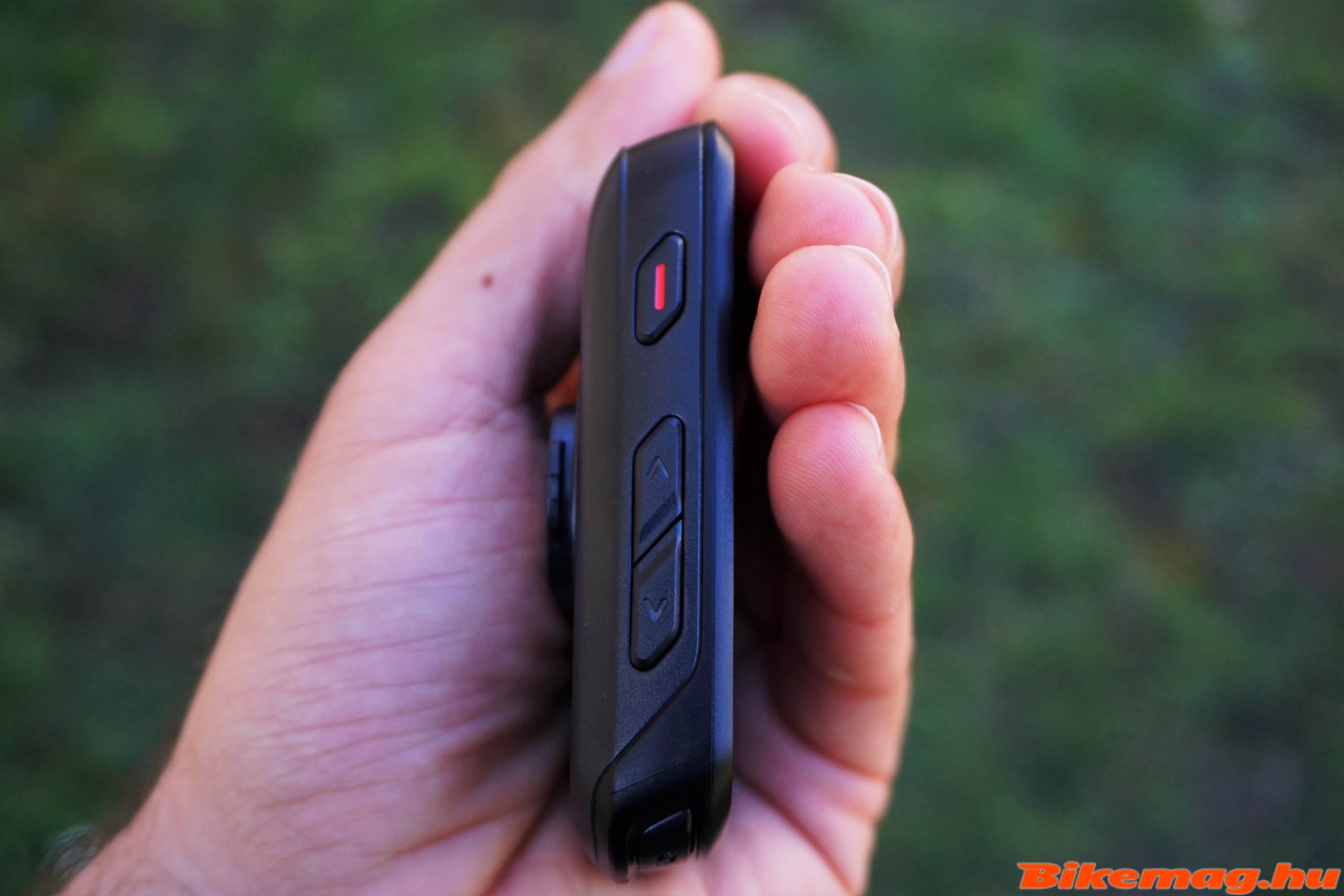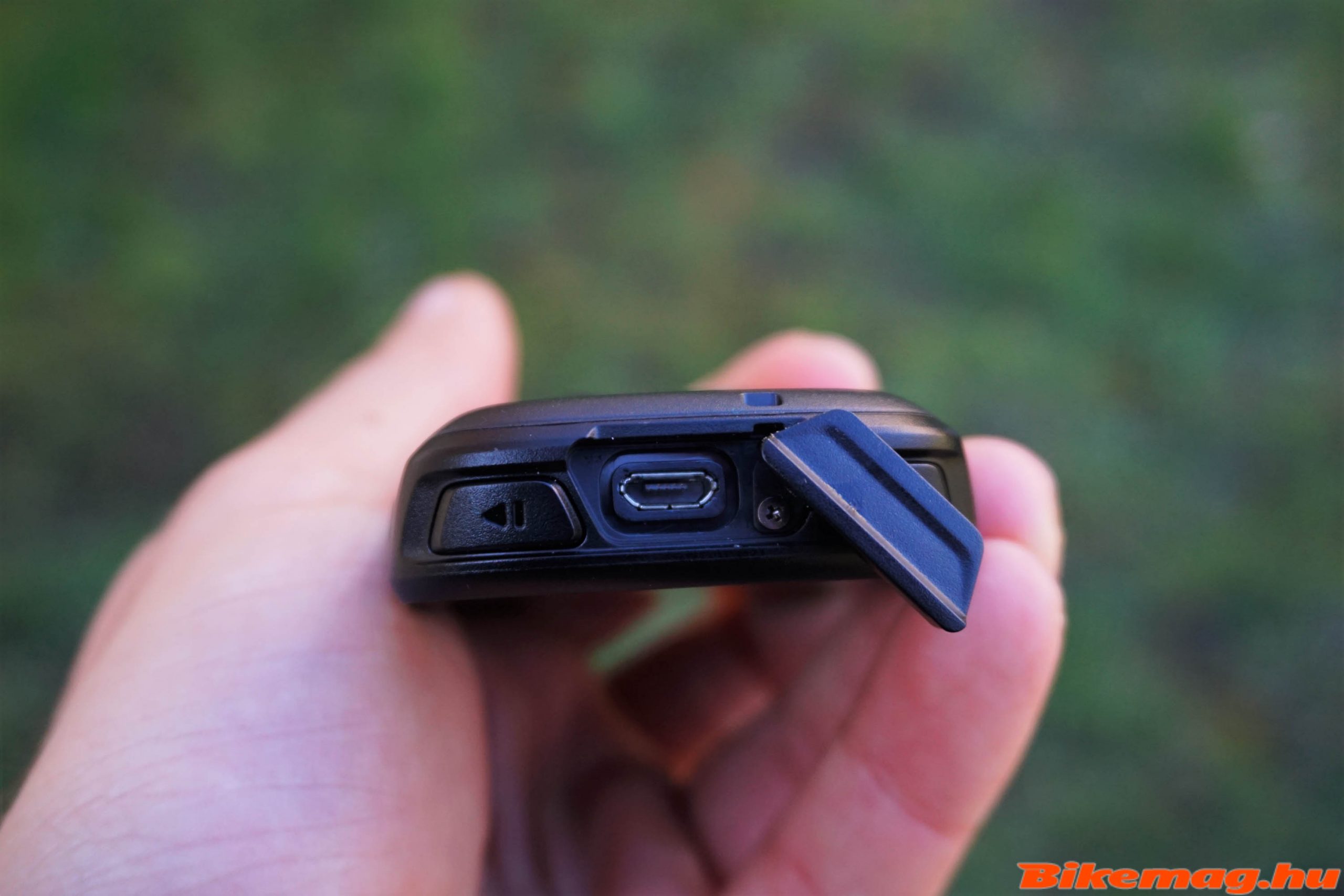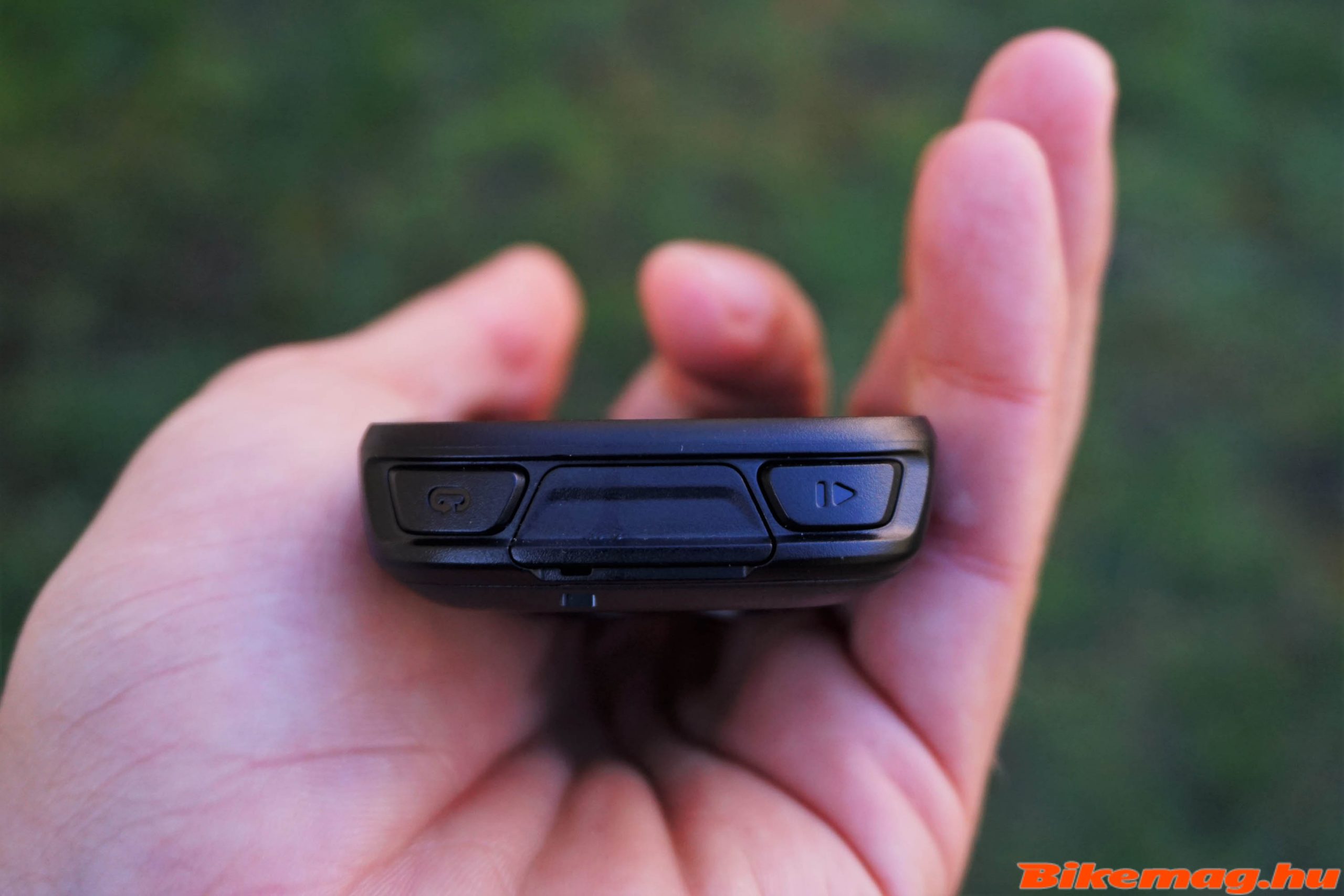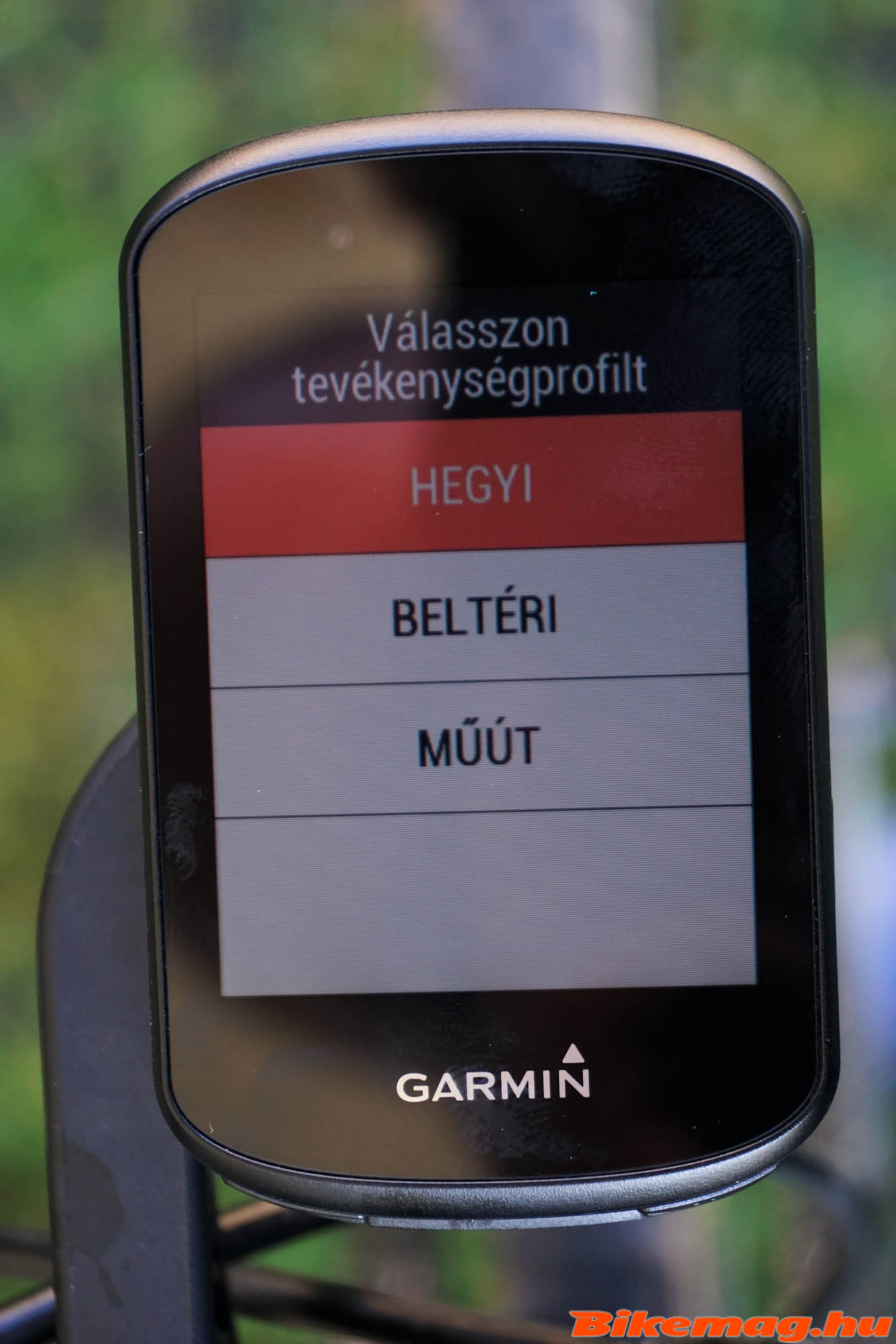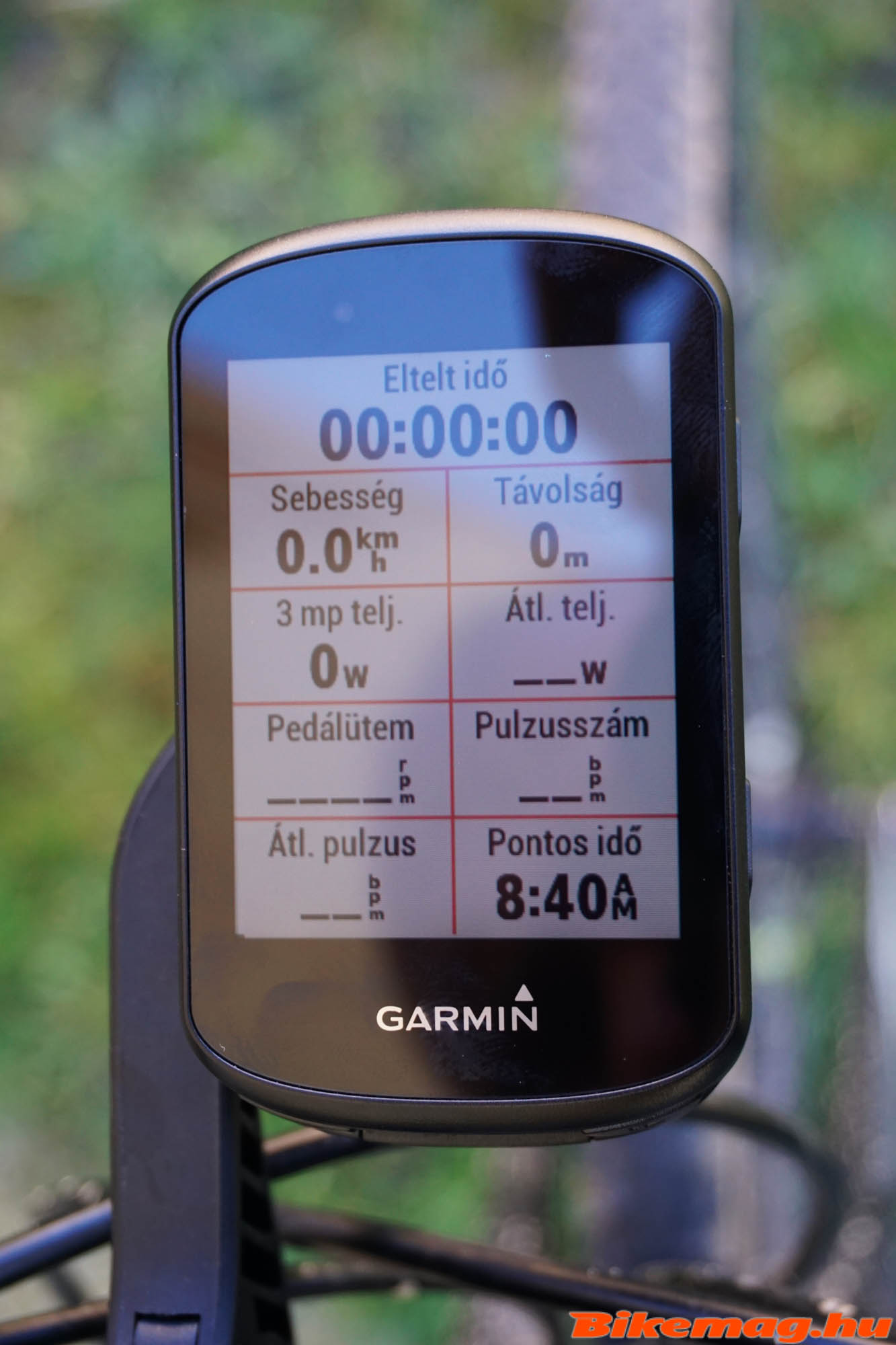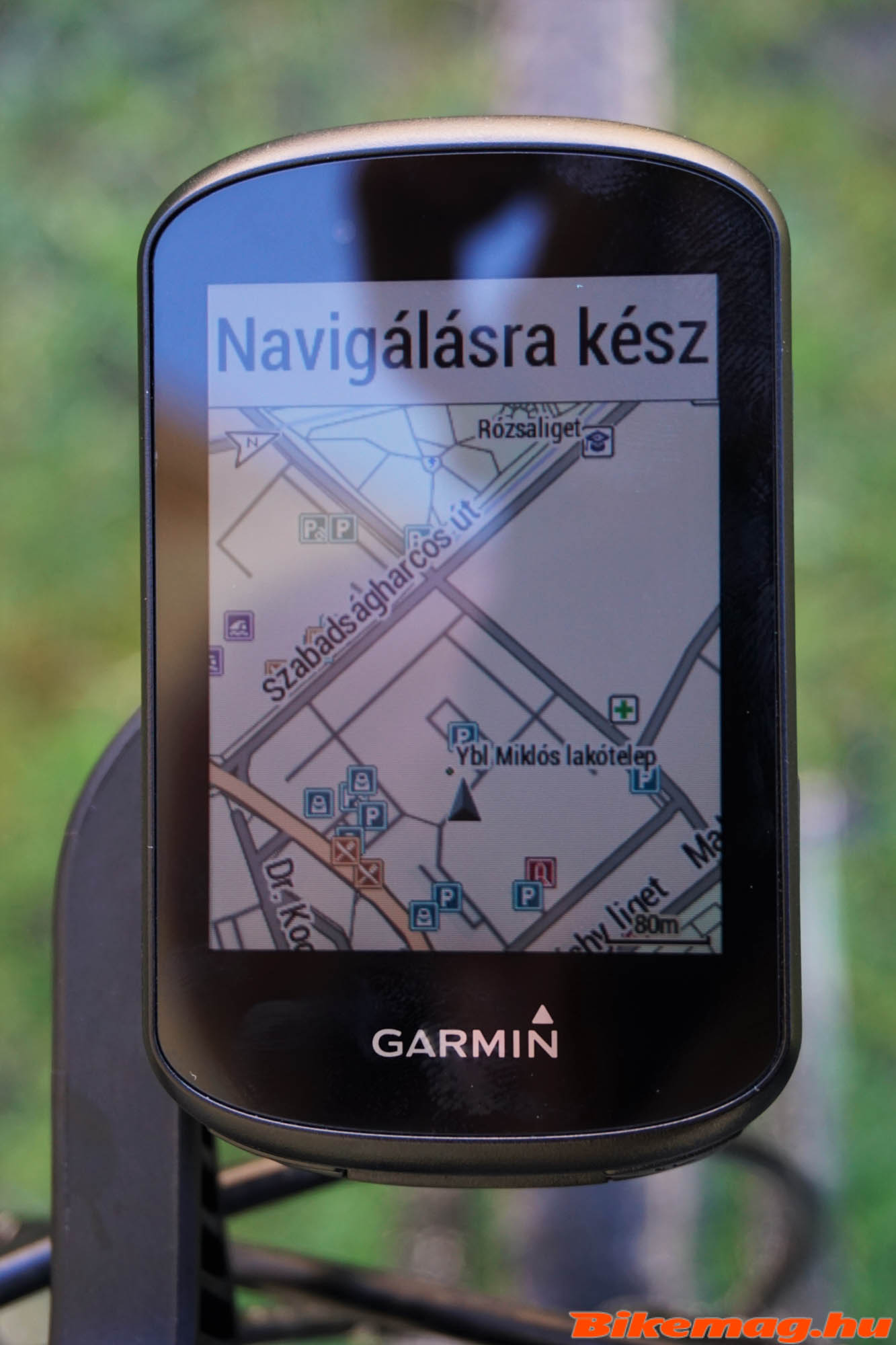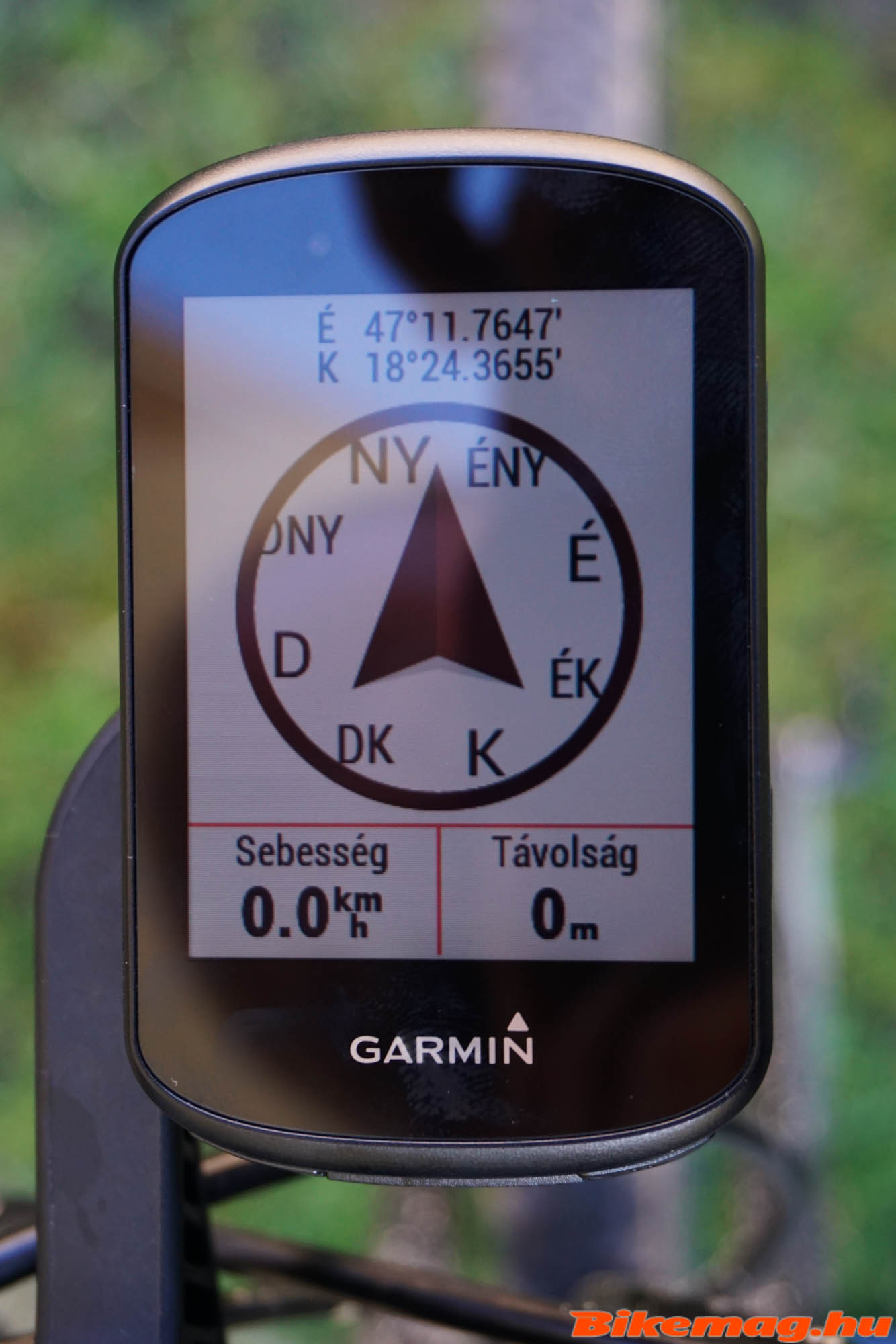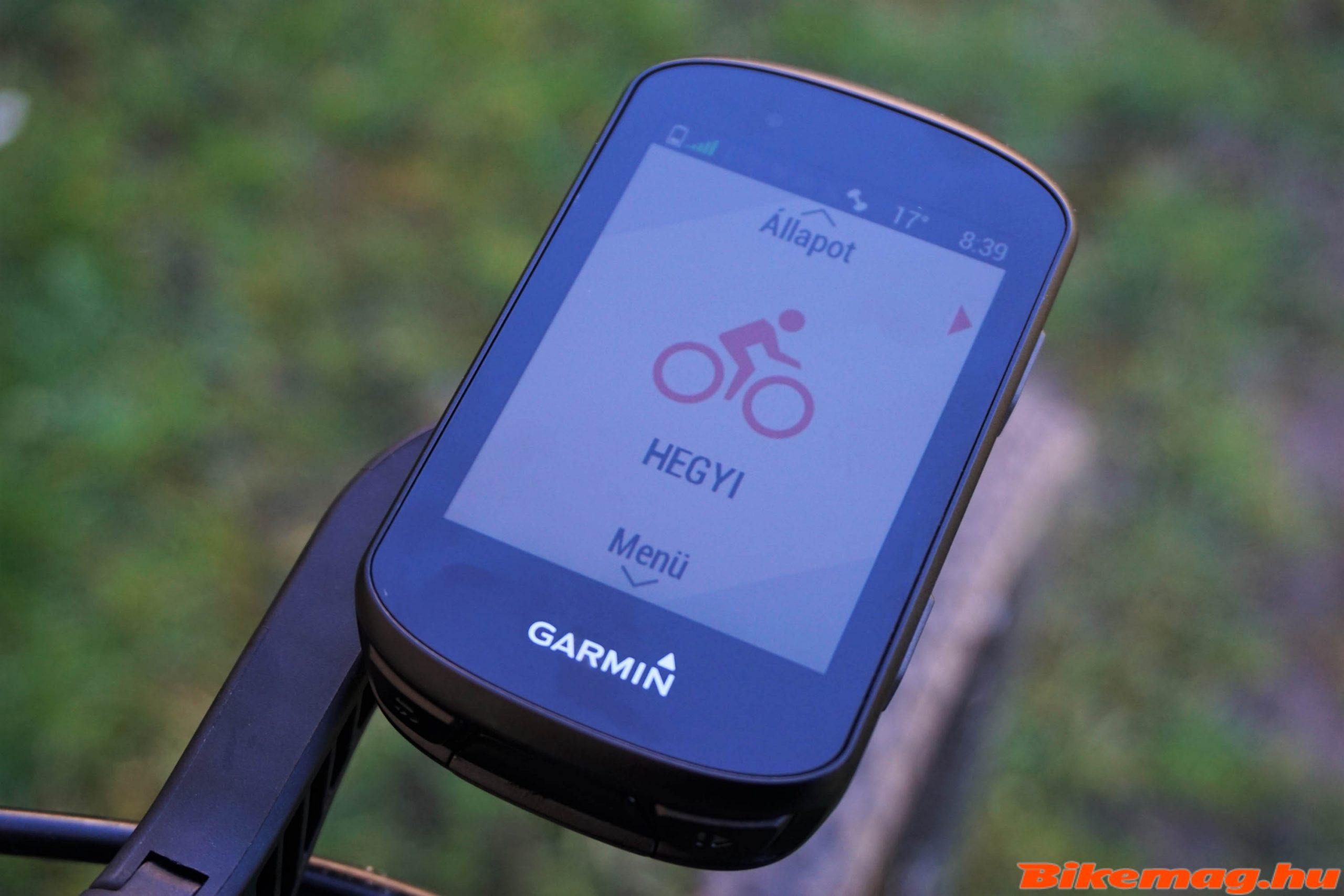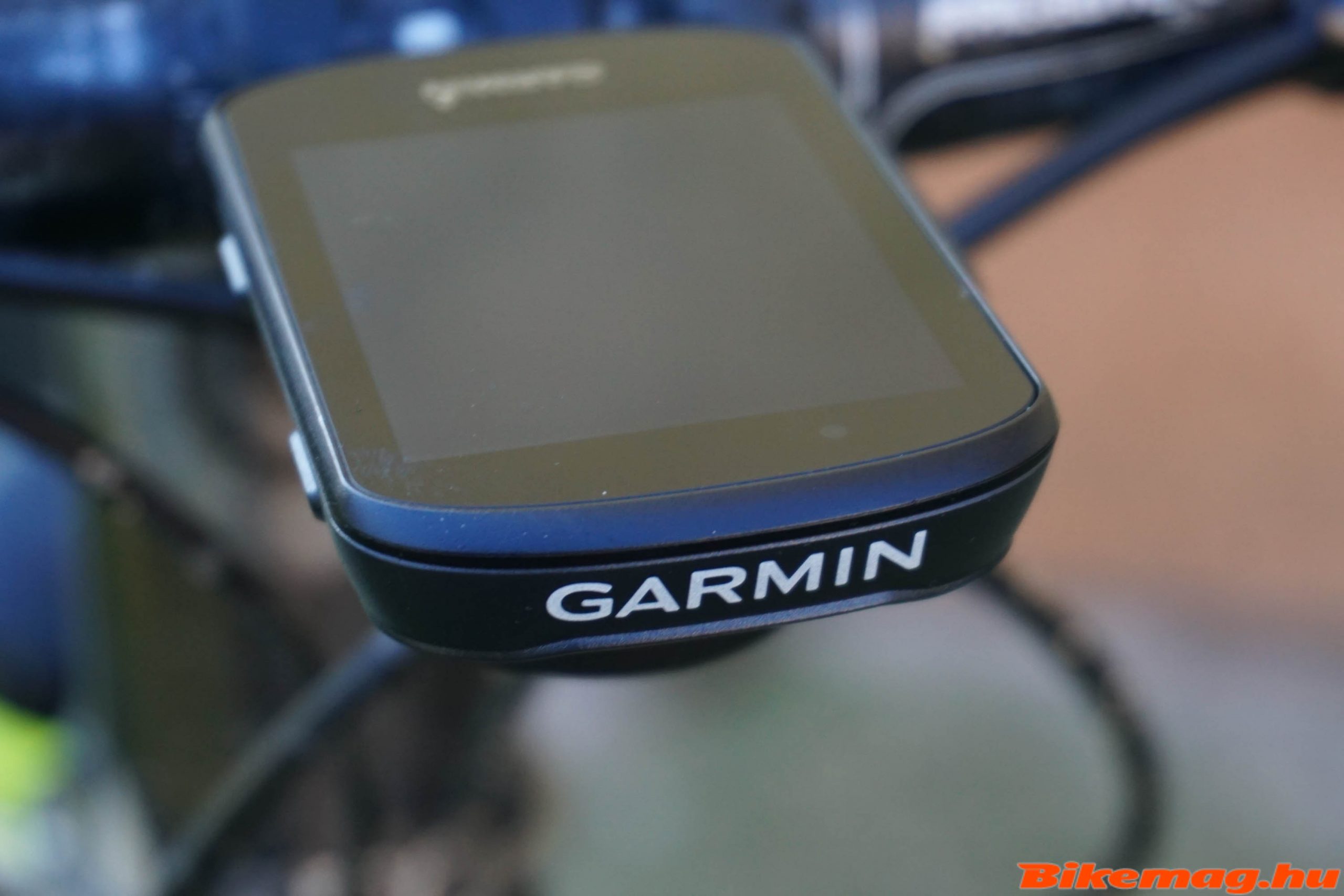Comparing a multisport smartwatch to a cycling-specific GPS computer sounds like an interesting assignment. The two devices target different market segments, so it’s like comparing apples to oranges. Nonetheless there is certainly some challenge in taking up a task like this, and the upshot may be a surprise to some. So let’s see who would better off with the Garmin Edge 530 and which cyclists should go for the Instinct Tactical multisport GPS!
The question in the title was posed to me by one a colleague this winter, and he suggested me to do a follow-up to our conversation in BikeMag. Previous to wording the present review, I held the opinion that a bike rider should always choose a cycling-specific GPS unit, and a GPS smart watch might only have limited use, in disciplines like cyclocross. Now my opinion is more nuanced…
I consider myself to an avid user of electronic gadgets. Over the years my partner and I owned many devices and presently use several smart watches and bike GPS units. We have gathered a lot of experience, subsequently I could have attempted to do a write-up on this subject any time previously. Nonetheless I felt that I need two devices that can serve as a true reference, made by the same manufacturer, employing up-to-date technologies. My wish came true when I received two such units from the Hungarian distributor for Garmin products, the bike-specific Garmin Edge 530 GPS and the Garmin Instinct Tactical multisport smart watch.
Garmin Instinct Tactical
The Garmin Instinct belongs to the multisport lineup in the brand’s vast number of GPS devices, aimed at those, who regularly participate in more than one type of sport activity. The Tactical is at the top end of the range, it has the “muscle” sort of speak, incorporating functions that may come useful for soldiers and hunters. In the realm of more peaceful activities, it caters for sports that I couldn’t have imagined needed a GPS smart watch, let alone a top-end model! This is when one realizes there is life beyond heart rate monitoring, not everyone is pursuing an endurance athletic activity. Knowing your exact GPS coordinates, directions and height above sea level are absolutely vital data in some sports.
Since I’m unable test out the capabilities of the Instinct Tactical while skydiving for example, I stuck to my normal sporting routine: cycling, trail running and hiking. I should also note that I did most of the testing in February and early March, therefore I tended to use the Instinct Tactical more than its cycling-oriented sibling. Yes, it’s much nicer to pull on running shoes in freezing weather, than to take the bike out for a spin!
The Instinct Tactical bears little resemblance to my older Garmin triathlon watch: this a proper general smart watch design which could be worn anywhere. It’s also quite comfortable to wear, the casing has a nice touch and the straps provide a great fit. There is nothing to fault here, thus I found myself wearing the Instinct Tactical as an everyday watch. I didn’t look at it much, I wore it for pleasure. Nevertheless on a few occasions the GPS function came quite handy, like when – due to lack of clear communication on the part of the organizers – I needed to measure the race distance in the follow car in Dubai.
Let’s finally delve into the features the device can provide a bloke like myself. First of all I tried the running related functions. In fact it can basically do everything that you’ll ever need from a trail running GPS unit. The only shortcoming I can think of is the limited display size and the number of functions the Instinct Tactical can display simultaneously. This is of course is true for all hand-worn smart watches. On the other hand, the information on the screen is fully customizable, and the user can bring together a collection of pages to his or her liking. Hence all the data is accessible while exercising.
I also fancied that heart rate is placed in the top right corner by default, so it’s detached from the rest of the data field. Speaking of heart rate, the watch has an optical sensor, which measures heart rate at the wrist. This of course is less precise than the conventional chest-mounted strap, the integrated optical technology is not perfect, and I doubt that it will ever match electrode placement adjacent to the heart. The main difficulty seem to be vibration. As the watch rattles on the wrist while running downhill on a trail, and this is where I usually got incorrect data and large value discrepancies. Same could be said of riding a MTB trails. The good news is that the Instinct Tactical can be complemented with a conventional heart strap, then the reading will be much closer to reality especially in adverse conditions.
Use of the Instinct Tactical is a piece of cake, which is quite important when dealing with endurance sports like running. Being forced to press buttons and look at the screen all the time could result in accidents, but Garmin has always found a way to make operation of the units simple and convenient. All functions are logically structured, navigation within the menu couldn’t be simpler. The main role of the buttons remain the same no matter how deep in the menu you navigate.
Although I only tend to run on single track trails, and need no navigation when I’m out running, the route tracking is never a redundant function in my opinion. There is always the chance that you’ll need it, like when you’ll have to do a detour due to forestry works, or any other unexpected event. So it’s great to have this feature in the Instinct, you can easily upload your route before setting out, and the Instinct Tactical provides you with basic guiding along the way. And there is less of a chance of getting lost for those who are not blessed with good sense of locality.
Apart from using the Instinct’s training features, it can also be paired to the phone to receive information from that smart device. For example our watch lets us know about incoming calls, messages and news, or can also show the actual weather or a forecast. The latter presumes having mobile internet, which most people do these days. The smart phone can also be used to access all the functions found on the Instinct Tactical, but for this you’ll need to download the Garmin Connect app. Furthermore, this smart watch also has an integrated thermometer, but in practice this will take your body heat measurement as opposed to ambient air temperature. Never mind…
For me the most welcome feature was Instinct’s speedy GPS signal reception. As soon as I stepped out the door, the device was ready, despite having many tall buildings in the area. All previous GPS devices needed at least a minute to find signal at my doorstep, some had even more difficulty, so I often resorted to starting the exercise in hope of signal to be caught soon. Presumably this Garmin unit has a more advanced GPS chipset, as well as the capability to receive signals from all major satellite navigation systems.
As I’m writing for a cycling audience, I should now discuss Instinct’s biking features. For one it has its own heart rate monitor, but can be paired with an external one, as well as a bike-mounted speed and cadence sensor. Hence the most essential data is available on this multisport smartwatch, although it lacks the capability to receive and display power numbers. So if you are serious about bike training, this watch might not be your ideal choice. In addition, it can only display 5 data fields simultaneously, which may also limit more advanced training regimes. Finally the Instinct Tactical is worn on the wrist by default, which is not contusive for continuous data monitoring. When mounted on the handlebar, the screen is too small and far away to be practical. Keeping it stable on the cockpit may also prove to be a challenge. All in all, using this device solely for cycling is quite limiting, and this is something I will return when comparing the two GPS devices in this review.
Garmin Edge 530
The Edge GPS devices represent the cycling specific range at Garmin. The Edge lineup has been around for over a decade, the models starting with the number 5 signify (e.g. 500, 510, 520, 530) are intended for athletes who require a high level of sport-related functionality. Merely the relative lack of mapping and navigation features separate the 500 series from the top of the line models. The Edge 530 in the present review continues this design philosophy, it has all the cycling-related capabilities Garmin ever devised. This is the unit we most often see on the handlebar of professional cyclists, but it’s favored by amateur cyclists too, making the 500 series the most popular among all Edge models.
I shouldn’t have to mention – but may be useful for the sake of comparison with the Instinct Tactical – that the Edge 530 is designed to be mounted on the bike’s handlebar or stem by means of the supplied forward-reaching or conventional quick release bracket. There are three ways to attach the Edge, and all employ Garmin’s proprietary mount. To mount the unit you place it in the console and turn it 90 degrees, to remove it you do the opposite. There is an additional strap to prevent accidental detachment while riding. Third party manufacturers also make this these type of mounts, some offering special extensions for specific handlebar constructions.
The Edge can be paired with basically all sensors which use the ANT+ protocol – including power measurement – and it’s also compatible with a Bluetooth heart rate chest strap. We are guaranteed to be able to take advantage of all the information available when riding a bicycle. The unit can display 10 functions simultaneously, 5 customizable data pages can be specified, resulting in 50 different usable functions. I dare to say that there is no rider –professional or amateur – who can take advantage of so much data. Every detail of the display is customizable, including the number and the locations of data the fields on the given page. Customization is relative simple as the available data is nicely categorized.
Apart from creating custom data fields and pages, the Edge 530 provides specific cycling profiles, such as MTB, road biking, indoor training, etc. We can also specify new ones as well, thereby setting up system where each of our bikes and riding types has a custom data set optimized for that certain style of cycling. I made my own road and MTB training setup during the test period, and was able to switch between the two with a touch of a button. This function can be handy when riding a gravel bike, where one encounters both types of terrain in the course of a single ride. Despite the large number of functions, I’d say this unit is easy to use, learning the ins and outs is no rocket science, everything seems quite logical and intuitive.
The Edge 530 carries such immense capabilities that not many cyclists I know could ever exploit. For one, I’d be greatly challenged to present all the features in this article. I won’t even attempt such feat, and shall be concentration on only a few general ones which I found to be beneficial for my way of riding. By the way, I think we’ve finally progressed from the illusion that more data is better, we need only the relevant ones for successful training.
Although I scorned at the navigation features of the Edge 530 in the introduction when compared to units in the 800 and 1000 series, it does indeed provide map-based navigation. Even if the navigation is turned off, choosing “map” from the menu brings us to the graphical analogue of the present location. If this screen is active, the unit warns the rider of a sharp turn for example. When navigation is turned on, the Edge 530 will guide to rider from A to B. In addition, the ClimbPro function tells the rider how much more climbing is left until the summit, which is actually quite useful if you’re riding in an unfamiliar environment.
Navigation has another great “smart” feature called Trailfolks, which can guide you along trails uploaded by local cyclists. There are thousands of routes in many areas all over the world, although in Hungary these seem to be lacking somewhat. Around the capital we may find a few, but where I live none are present.
Finally there is also an accident alert function, that works on the presumption that if you remain in the given location for a long time, you may be in trouble. In this case the device – linked to your smartphone – sends a message to the specified contact person. Here I should note that we can pair the Edge 530 with our phone and get instant messages and notifications displayed on the bike’s handlebar.
To conclude the review, let’s summarize the main differences between the two devices! These are the following:
- The Instinct Tactical can be used for many different types of sporting activities, it’s suitable for general street wear, while the Edge 530 is predominantly cycling specific, and cannot be worn as a watch.
- The Edge 530 can display more data at once and the data is clearly visible while cycling.
- The Edge 530 can be used with a power meter.
- The Edge 530 features a graphical map function.
- The Edge 530 has useful cycling smart features.
Most of the above would suggest that the Edge 530 literary has the “edge” over the Instinct Tactical – at least from our own cycling perspective. It’s somewhat difficult to argue in favor of the Instinct Tactical, but there are some reasons why one would choose it over the Edge. For example there a good many cyclist who tend to do other sporting activities – for example regularly visits the gym for strength training, does some running or hiking. These are great crossover activities, and the Edge would not be the most appropriate device in these circumstances.
Moreover the vast amount of data provided by the Edge 530 is not really necessary for most cyclist, and the Instinct’s capabilities may be more than sufficient even on an advanced training level. The Instinct is easier to use, which may also be a valid argument in this debate. I would go as far as to suggest that the majority cycling enthusiasts would be best off with owning both Garmin devices: one on the bike, and one for everything else. Take the Instinct when pulling on the sneakers, and the Edge 530 when hopping on the bike. Enter Garmin paradise!
This review was made possible with the assistance of Garmin’s distributor in Hungary.
For more information click here!
Garmin Edge 530
Garmin Instict Tactical



